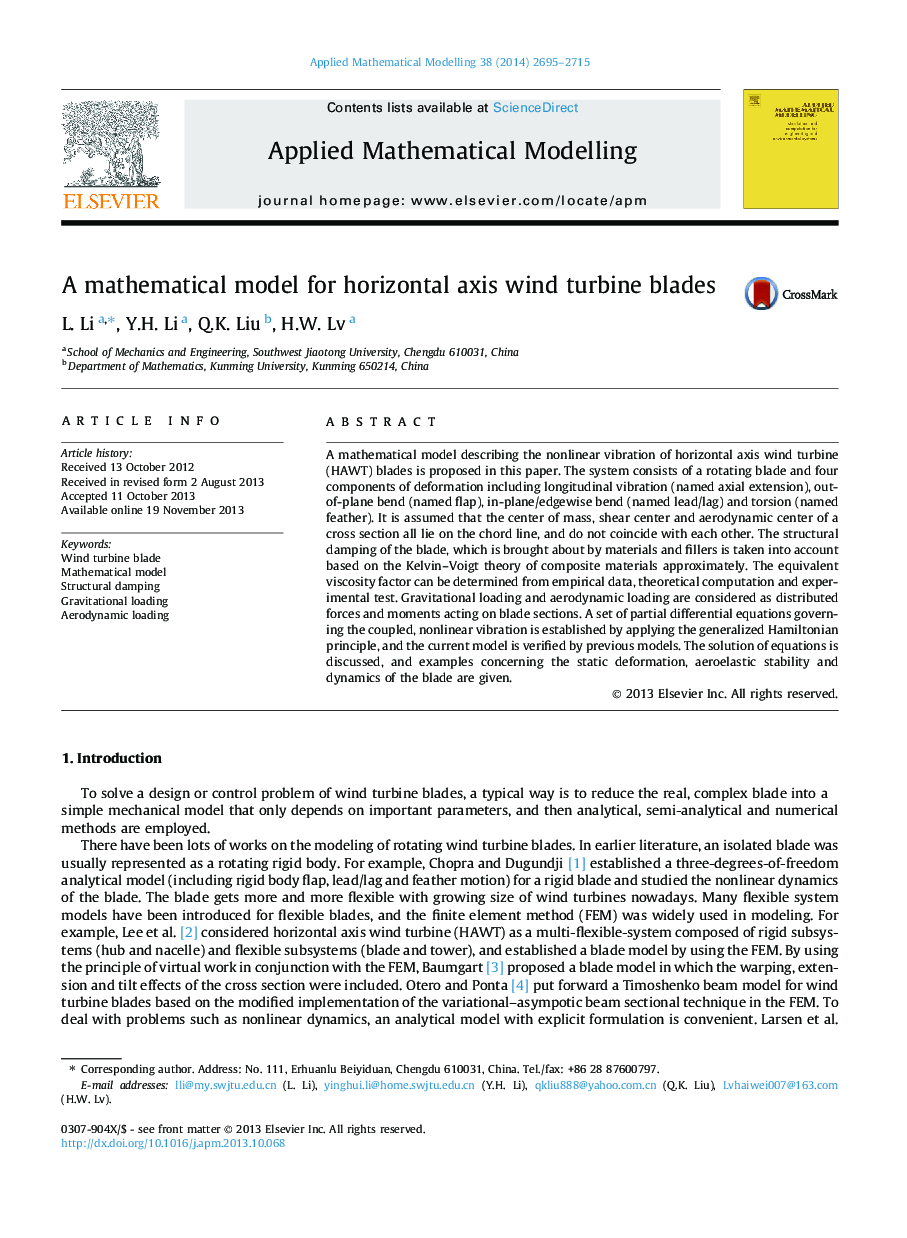| Article ID | Journal | Published Year | Pages | File Type |
|---|---|---|---|---|
| 1704447 | Applied Mathematical Modelling | 2014 | 21 Pages |
A mathematical model describing the nonlinear vibration of horizontal axis wind turbine (HAWT) blades is proposed in this paper. The system consists of a rotating blade and four components of deformation including longitudinal vibration (named axial extension), out-of-plane bend (named flap), in-plane/edgewise bend (named lead/lag) and torsion (named feather). It is assumed that the center of mass, shear center and aerodynamic center of a cross section all lie on the chord line, and do not coincide with each other. The structural damping of the blade, which is brought about by materials and fillers is taken into account based on the Kelvin–Voigt theory of composite materials approximately. The equivalent viscosity factor can be determined from empirical data, theoretical computation and experimental test. Gravitational loading and aerodynamic loading are considered as distributed forces and moments acting on blade sections. A set of partial differential equations governing the coupled, nonlinear vibration is established by applying the generalized Hamiltonian principle, and the current model is verified by previous models. The solution of equations is discussed, and examples concerning the static deformation, aeroelastic stability and dynamics of the blade are given.
